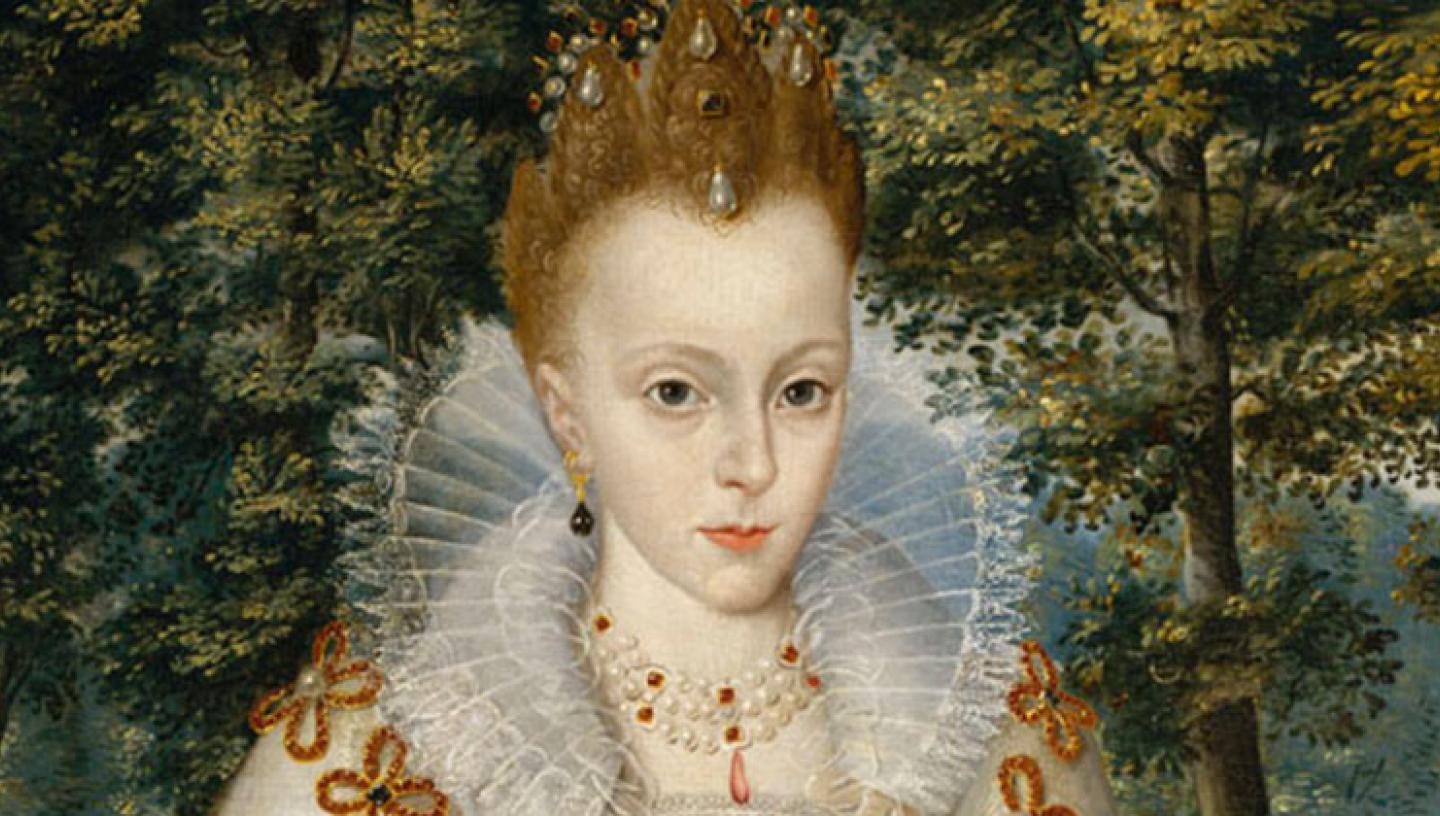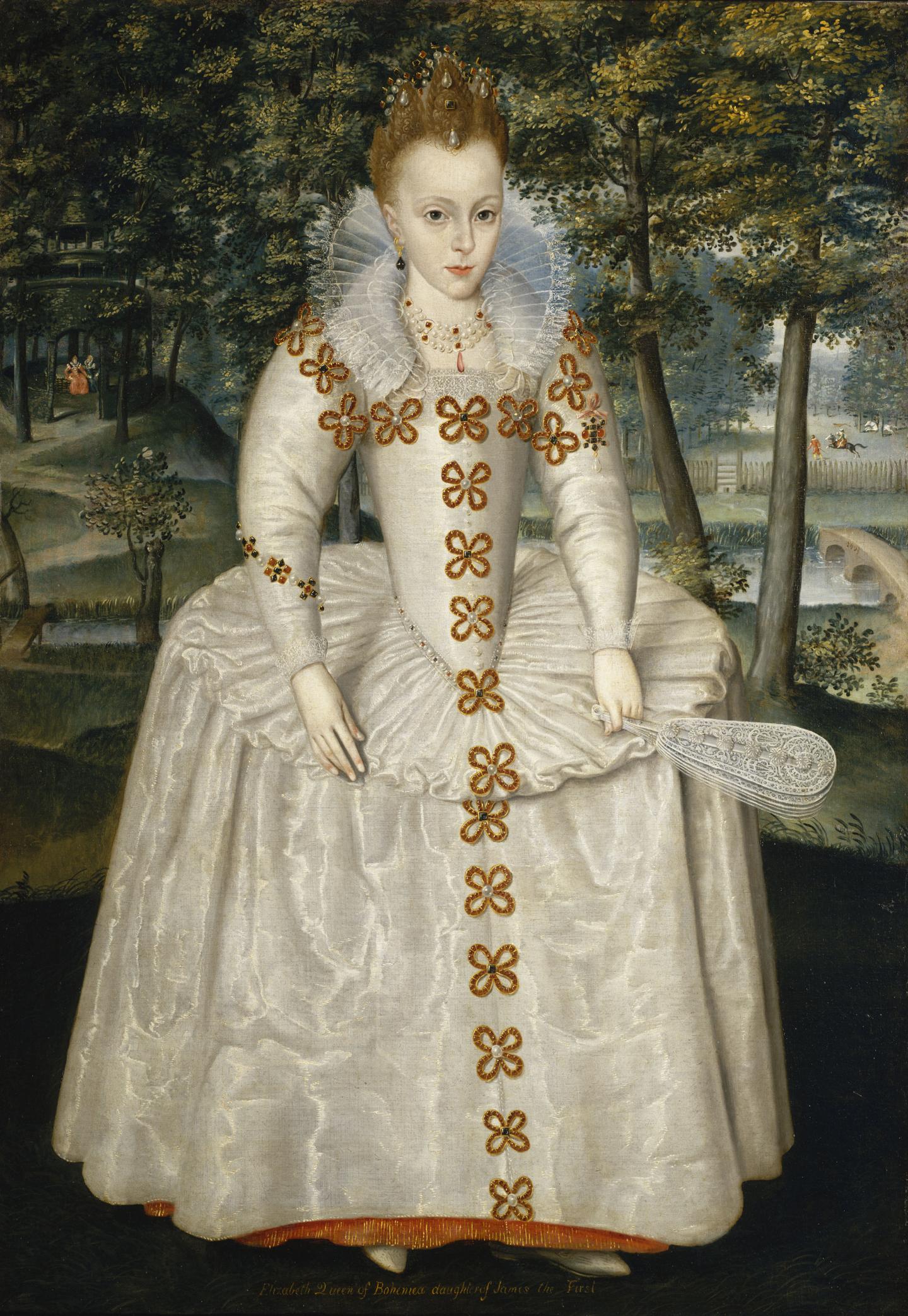
Elizabeth Stuart of Bohemia, the 'Winter Queen'
Discover the romantic marriage and brave life of the 'Winter Queen', daughter of James I, and hidden figure of British history
- She was named after Elizabeth I; according to pamphleteer John Reynolds, ‘She inherited the name and virtues, the majesty and generosity of our immortal queen Elizabeth.’
- Her wedding to Frederick V, Prince Palatine was on Valentine’s Day
- The direct descendants of this popular ‘Queen of Hearts' inherited the British crown
Who was Elizabeth Stuart?
Elizabeth Stuart was the second child of King James I (VI of Scotland) and Queen Anne and their only daughter to survive past infancy. Her brother Charles, four years younger than his sister, was considered weak and unlikely to survive into adulthood. James’ hopes for succession dynastic marriages for his children were therefore invested in his eldest son, Henry Frederick, and his charming daughter, Elizabeth.
Born in Scotland on 19 August 1596, she was named Elizabeth in honour of the then-ageing English Queen, Elizabeth I, who had remained childless.
To all intents and purposes, Elizabeth had a happy upbringing at Linlithgow Palace, situated 15 miles west of Edinburgh, and one of the grandest of Scotland’s royal residences.
Childhood and education: Elizabeth’s ‘fairy farm’
In 1603 her father James succeeded Elizabeth I to the English throne. Elizabeth was handed over to the care of Lord and Lady Harrington and took up residence at Coombe Abbey, Warwickshire, located some two and a half miles north of Coventry.
Lord Harrington indulged her passion for nature, and in a secluded wilderness at the end of the park arranged the construction of a number of little wooden buildings in all the different orders of architecture which housed paintings and stuffed animals. He also established an aviary and a miniature menagerie (she continued to collect various animals throughout her life) which was later expanded to include meadows stocked with the smallest breeds of cattle from Jersey, Shetland and the Isle of Man. Elizabeth referred to her miniature world as ‘her Territories’ and ‘her Fairy farm’ and she engaged a pauper family as keeper of her birds and beasts.
Elizabeth’s age, 7, is inscribed on the fan, while the date 1603 (the year of the death of Elizabeth I and the succession of her father James to the English throne) is inscribed in the right background.
James was clear in his instructions that the princess, unlike her Tudor predecessors and her brothers, was not required to spend her mornings learning Greek and Latin, but to educate her thoroughly in religion and a general knowledge of history. In her father’s opinion ‘to make women learned and foxes tame had the same effect – to make them more cunning’. Elizabeth would later ensure that her own daughters received a classical education, and worked to overcome this deficiency by offering to help Henry with his Italian lessons if in exchange he taught her Latin.
Henry Frederick, Prince of Wales
Elizabeth idolised her older brother - they shared a love of life which eluded the sickly Charles, four years younger than his sister. Her letters to Henry reveal a deep affection and and mutual respect. In 1605 she writes ‘My noble brother, I rouse you from sleep to remind you that I am your most humble servant, and desire above all that I might have the pleasure of remaining in your good graces and your best loved sister.’
Henry’s sickness and death on November 6, 1612, in the midst of Elizabeth's betrothal celebrations devastated her. It is not mentioned in Elizabeth’s letters of 1612 or 1613, a silence that suggest great mourning however her strength of character can be demonstrated by her attempts to gain access to Henry’s isolated sick room. Disguised as a country girl, she tried several times to gain admittance to Henry but was recognised and turned back. Henry’s last words were his sister’s name.
Marriage to Frederick V
As King of England, as well as of Scotland, James I had a wider responsibility than before his succession and his relations with Europe assumed a correspondingly greater significance. Mindful of the political tensions he had inherited from Elizabeth’s long reign, he fashioned himself in a new role as peacemaker within the wider context of Continental discord. In truth, this was no easy role to play, as one of his immediate aims was to come to terms with England’s perpetual and Catholic enemy, Spain, while simultaneously serving as the role of leader of a Protestant Europe. His chief problem in foreign affairs was how to combine the two roles, but the arrangement of judicious marriages for his children offered up a solution which could potentially fulfil his ambitions. Initially James considered a Catholic match for both Henry and Elizabeth, and as early as 1603 positioned the future Louis XIII a suitable candidate for Elizabeth’s hand.
By the age of 12 Elizabeth’s political value was such that a member of the influential Hapsburg family, King Philip III of Spain, put himself forward as a eligible suitor. While Queen Anne relished the opportunity of a glittering Spanish throne, James’ mind was set on a Protestant:Frederick V, Prince Palatine of the Rhine in the Holy Roman Empire, frequently known as the Palsgrave.
Luckily for Elizabeth, Frederick was her own age, handsome, athletic, of a winning personality and generous. In many ways he resembled her brother Henry, with whom he developed a deep friendship. Frederick could not fail to love Elizabeth although she was initially more reserved.
A Valentine’s Day wedding
On Valentine’s Day, 14 February 1613, a spectacular wedding ceremony took place in the Royal Chapel at Whitehall Palace in London.
The 16-year-old bride was resplendent in a cloth of shimmering silver lined with taffeta. Many diamonds of estimable value were embroidered upon her sleeves which dazzled the eyes of all the beholders. She wore a crown adorned with glittering diamonds and other precious stones ‘so thick beset, that they stood like shining pinnacles, upon her amber coloured hair.’ The sixteen noble bridesmaids attending the bride were also dressed in white satin, and adorned with such a cornucopia of jewels that her passage ‘looked like a milky way’.
The handsome bridegroom, also aged 16, was attired in a fitting counterpoint to his stunning bride. His white satin ensemble was richly embellished with pearls, symbolising purity and innocence and signifying a cosmic unity, a spiritual relationship between the two young people.
The wedding service itself was conducted by the Archbishop of Canterbury, and the German-speaking groom uttered his well rehearsed vows in English, underlining the fact that through this union the Church of England was extending its influence across Europe. The teenage bride’s inability to stifle her giggles through her wedding vows did not lessen the importance of the occasion, and may have been occasioned by the her mischievous groom’s wedding gift of a monkey house. Indeed, her high spirits only served to endear her to her family and wedding guests.
The poet and cleric John Donne’s Epithalamion was only one among dozens of extravagant marriage poems published to mark the occasion. In the ‘Marriage Song on the Lady Elizabeth and Count Palatine being married on St Valentine’s Day’, Donne describes the happy couple as two phoenixes whose joined breasts are unto one another mutual nests and whose love and courage never shall decline. In classical texts, the phoenix lived to a great age and finally burnt itself to ashes on an altar fire from which a new young phoenix arose.
The lavish evening celebrations included a masque written by Thomas Campion and produced by Inigo Jones (unfortunately at least one spectator found it long and tedious, commendable only for its extravagance).
The 'Winter Queen’
At the time of their marriage, Elizabeth and her young groom Frederick V were destined to achieve international power and influence. However, by 1621, Elizabeth was in exile, destined to be remembered as the ‘The Winter Queen’, a derogatory epitaph that reflects the short duration of her rule in Bohemia, with her union with Frederick deemed a political failure.
For almost two months, the young couple were feted and feasted in London before setting out on their journey to their new home in Heidelberg, in south west Germany. Together with their retinue, they processed to the south east coast via Greenwich, Rochester and Canterbury eventually sailing on the ‘Prince Royal’ from Margate to Flushing in Holland on 25 April 1613.
Elizabeth and Frederick eventually reached the Palatinate and its capital in Heidelberg situated on the banks of the river Neckar. Elizabeth upheld the standard of entertainment she had grown accustomed to during her youth and engaged Inigo Jones, who accompanied Elizabeth and Frederick to their new residence in the Lower Palatinate, to design an indoor theatre.
Six years later, in late 1619, Frederick and Elizabeth were crowned King and Queen of Bohemia (today part of the Czech Republic) at the invitation of the Bohemia Confederacy to prevent a Catholic incumbent ascending to the throne. Barely a year after receiving the crown, the couple were defeated at the Battle of the White Mountain, and driven from their court in Prague and deprived of all their Palatine lands by the Hapsburg Holy Roman Emperor Ferdinand II, events which led to one of the longest and most destructive conflicts in human history:The Thirty Years War.
Death and legacy
During their separations whilst Frederick was on campaign, the couple wrote to each other three or four times a week, sometimes even twice in one day. Frederick describes Elizabeth as his ‘only heart’, he ‘kisses her mouth a million times in imagination’.
Frederick died unexpectedly from the plague at Mainz while on perpetual military campaign in 1632. So long as she lived, Elizabeth’s rooms were draped in black, and in memory of Frederick special days were set apart for fasting. She later wrote ‘though I make a good show in company, yet I can never have any more contentment in this world, for God knows I had none but that which I took in his company, and he did the same in mine.’
Elizabeth lived on in the Dutch Republic for a further 30 years, in voluntary exile, returning to England in 1661, a year before her death and a year after the restoration of her nephew, Charles II.
During the period of the Thirty Years War (1618-1648), Elizabeth was one of the foremost power brokers for the Protestant cause in Europe. Beautiful, high spirited and a fluent linguist, Elizabeth inspired poets, courtiers and statesmen whilst her devotion to her husband and her loyalty to her people endured. Throughout her years of exile, at home and abroad, she was loved as the original ‘Queen of Hearts’.
Forty years after Elizabeth’s death, The Act of Settlement of 1701 named the Electress Sophia of Hanover (1630-1714), Elizabeth’s younger daughter, as the most direct Protestant heir to the English throne. Her grandson, Prince George of Hanover, would succeed to the throne in 1714 after the death of Queen Anne, the last Stuart monarch.
You can see these paintings in the Queen's House for free.


